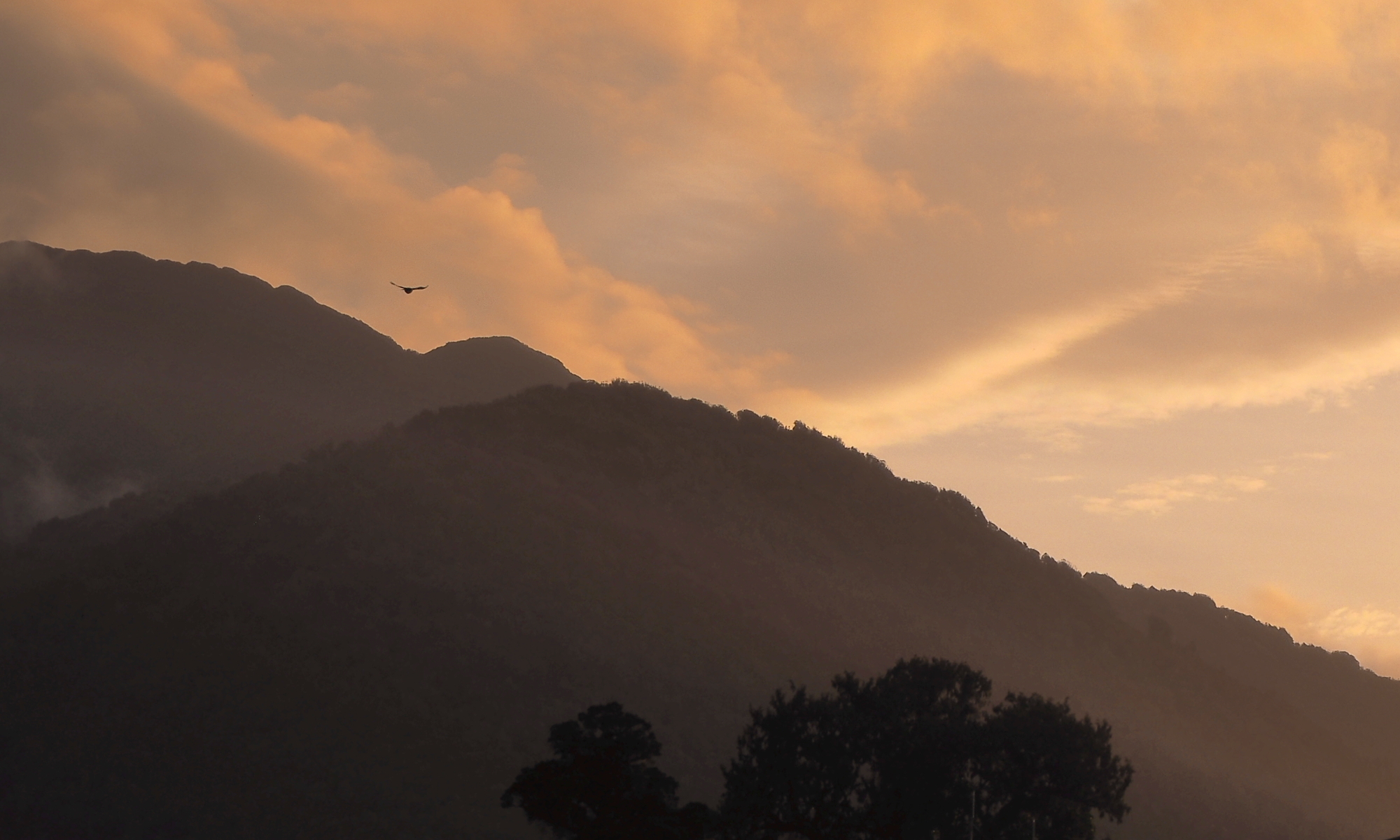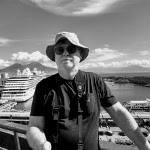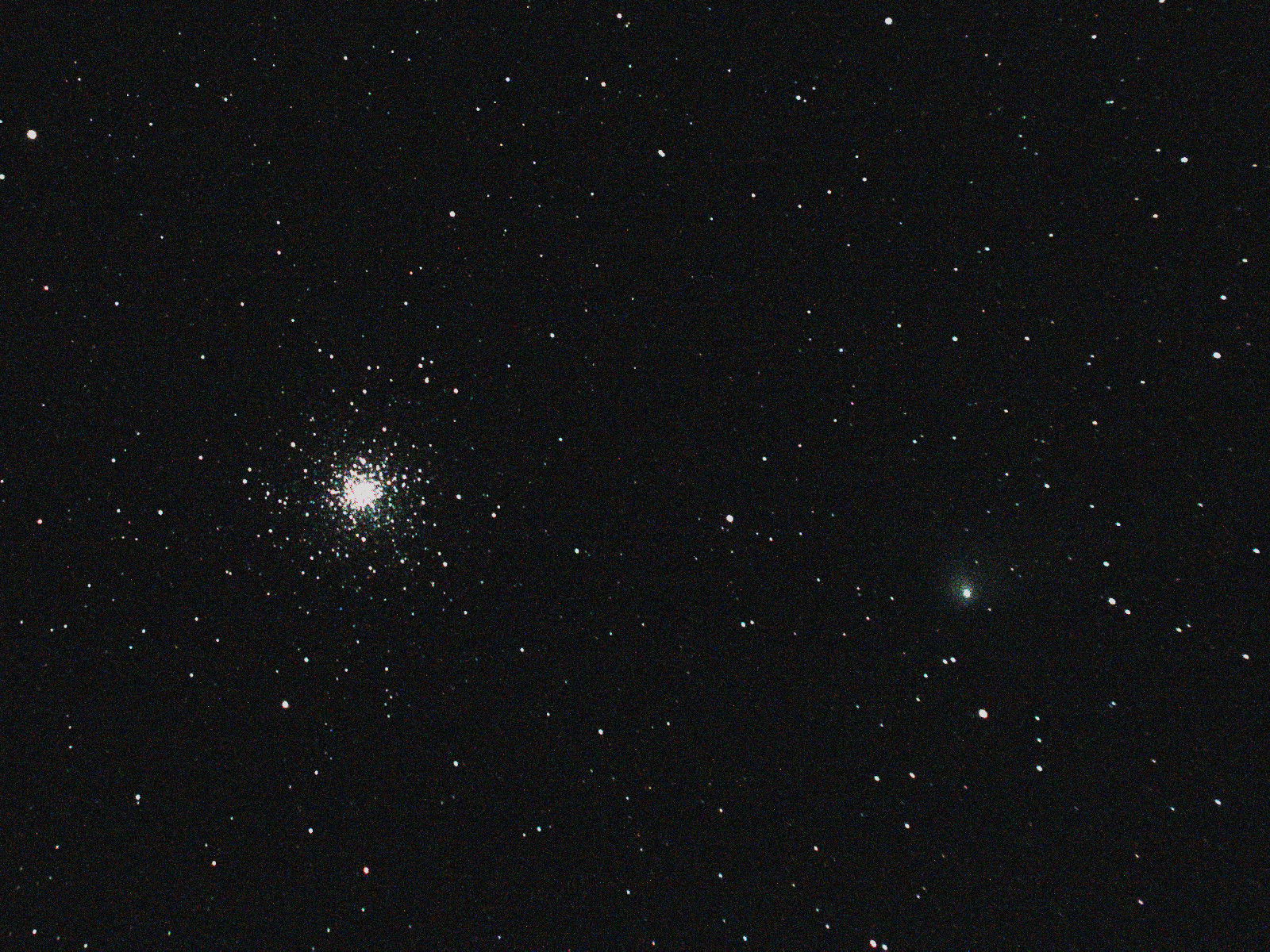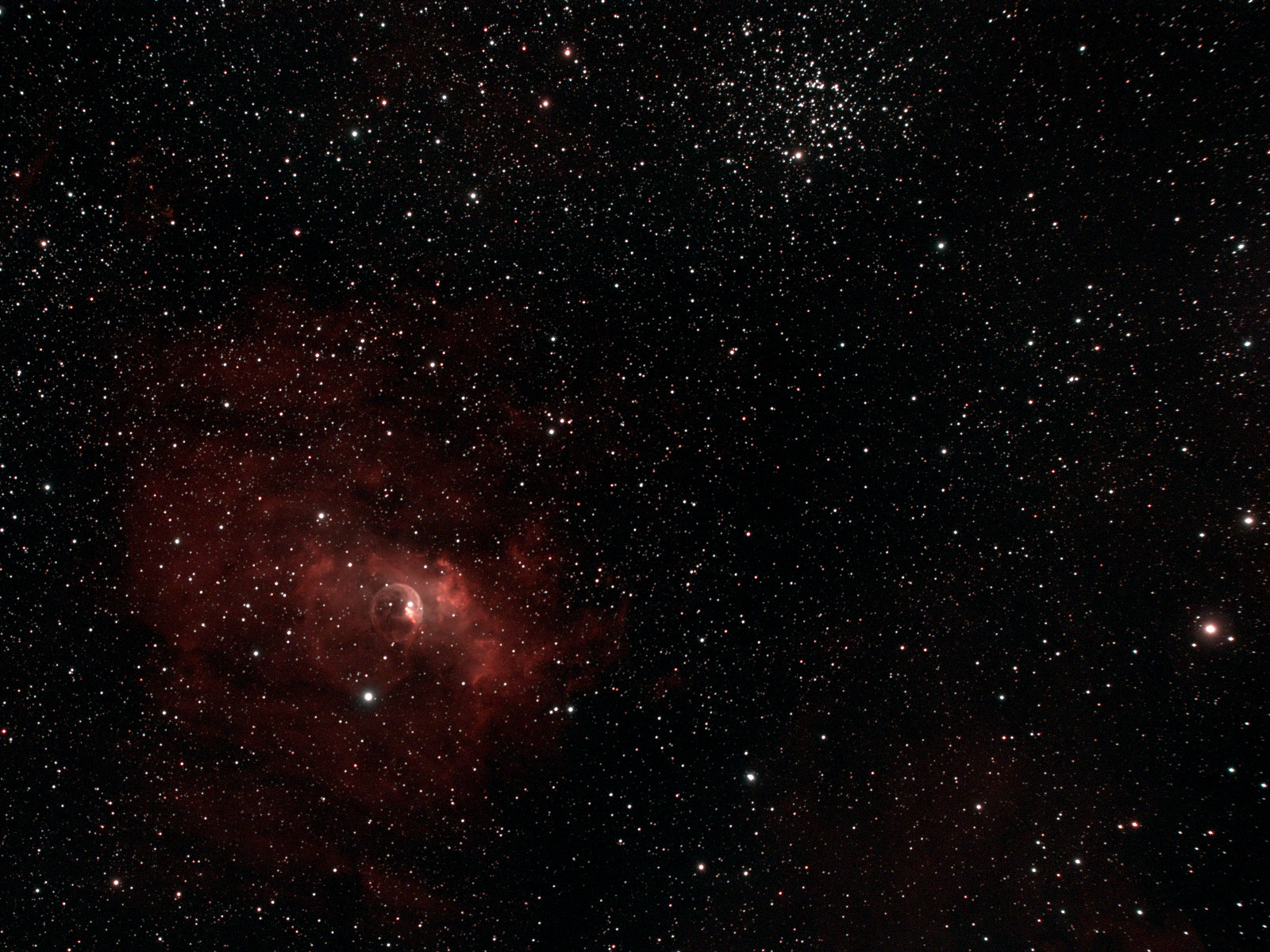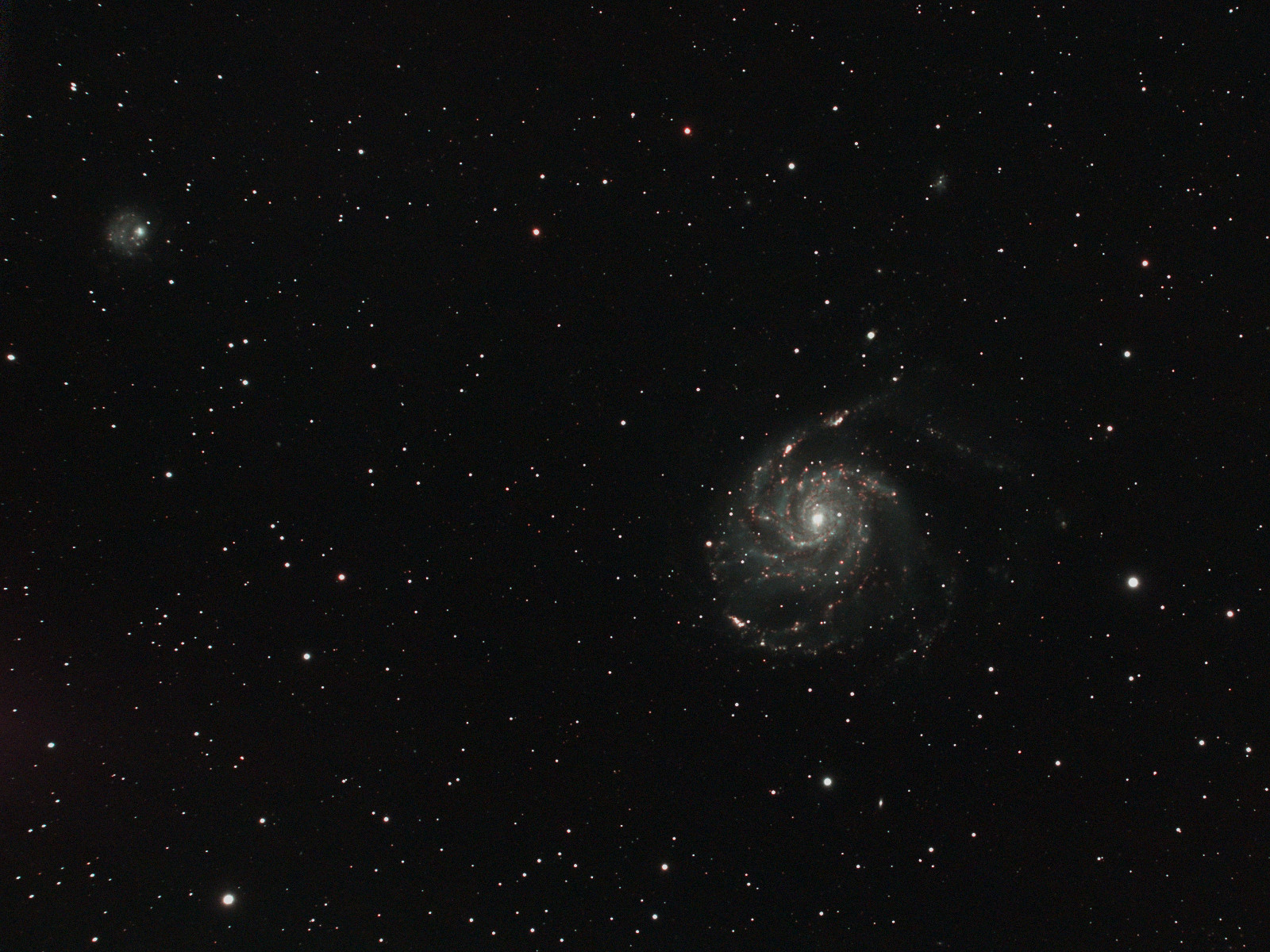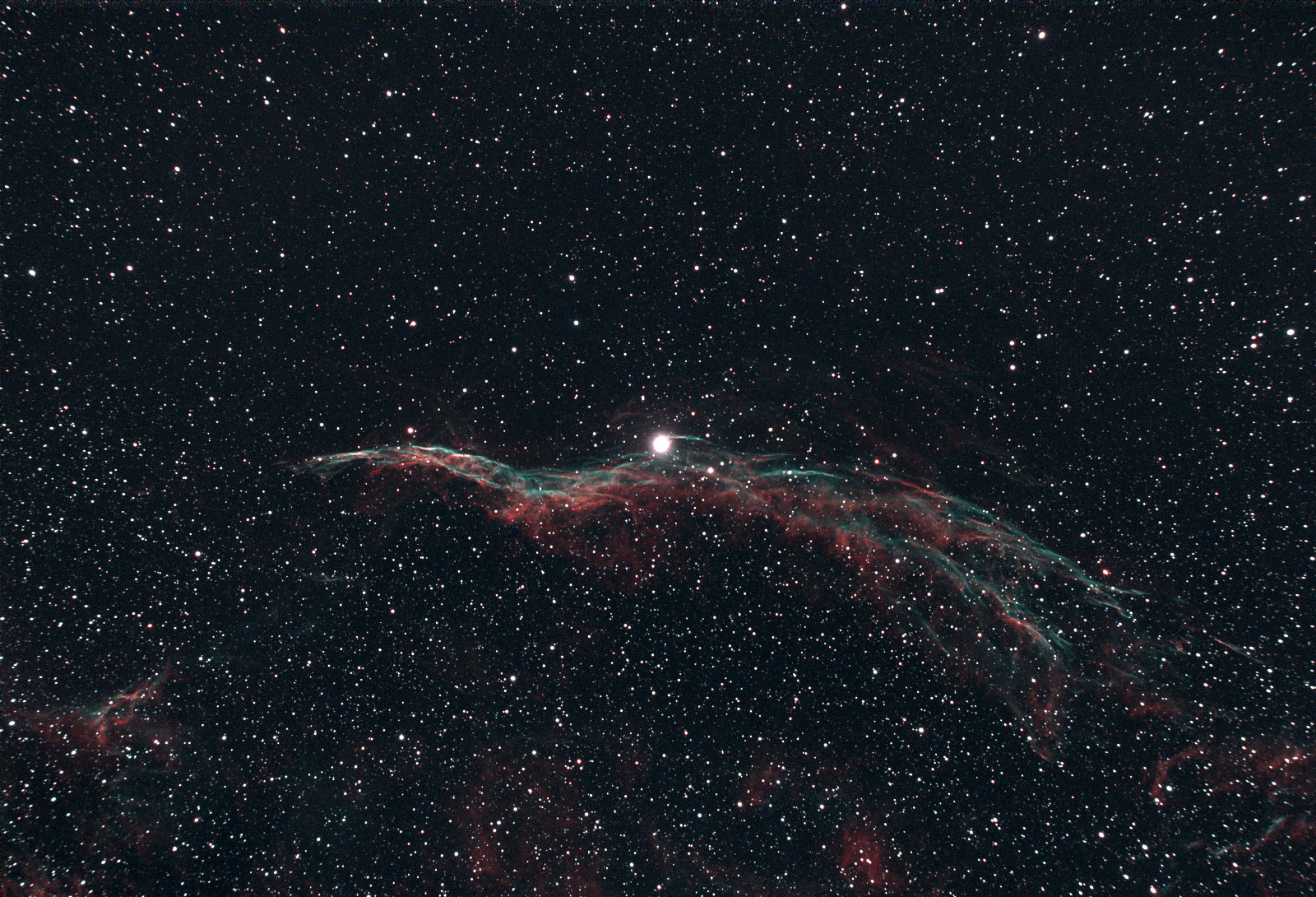
This image is from 18 5-minute exposures. With luck, I’ll get some more tonight and sharpen it up a bit.
Edit: As promised, here’s the same image with additional exposures:
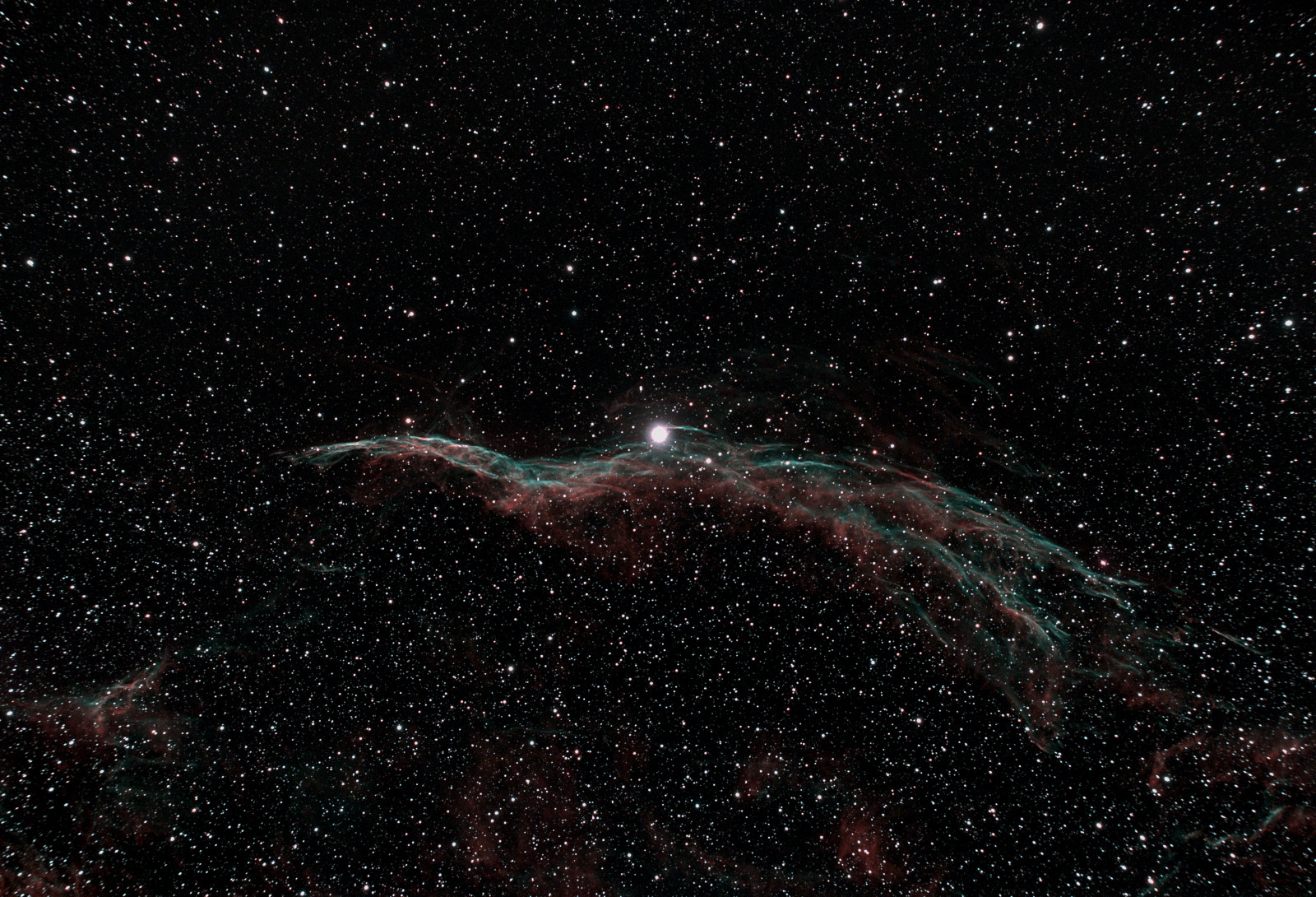
The single exposures aren’t bad on their own. However, the noise in the image is terrible:
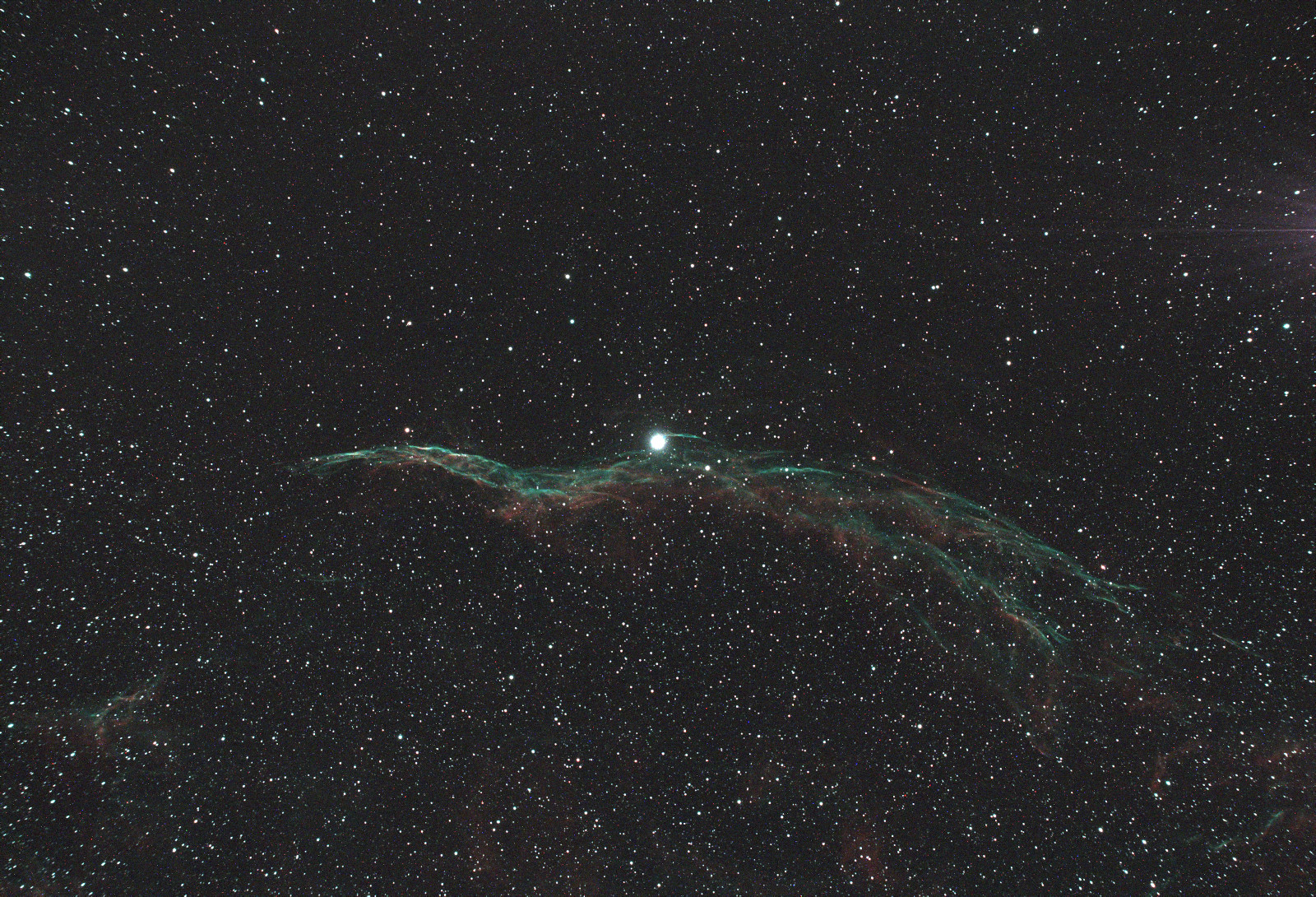
(The electronics in the image sensor caused the odd artifact along the upper right edge.)
For your convenience, here are a couple of 100% crops of the single vs. combined images.
Single exposure:
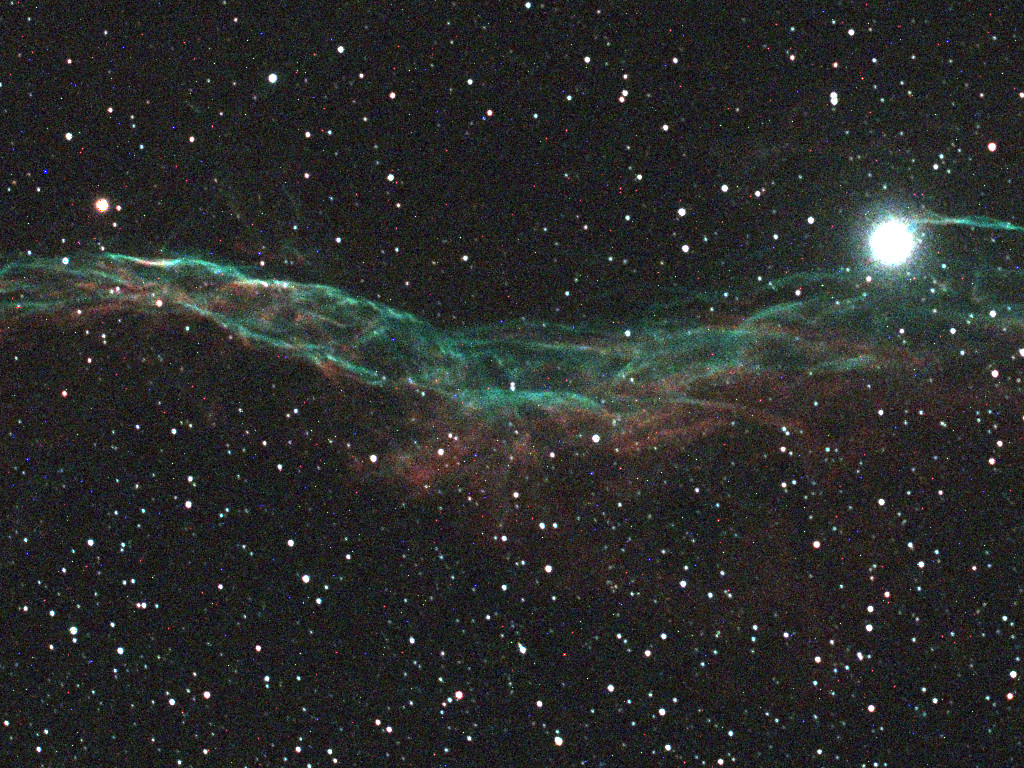
Note the many tiny bright blue dots. These are defects in the image; pixels that fired inappropriately. There are many other fine grain flaws, but the blue dots stand out.
…with 65 sub-exposures:
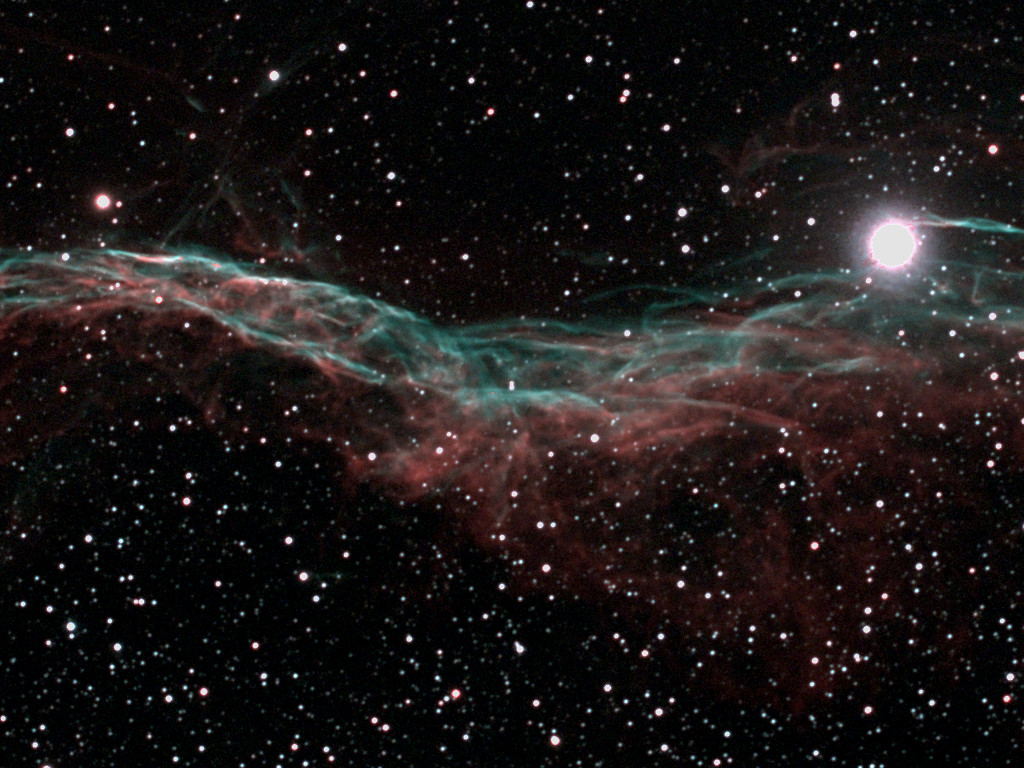
The blue dots are gone.
When I started this hobby I thought the purpose of multiple exposures was to make dim objects brighter. But it isn’t — the goal, the magic sauce, is noise reduction. With many exposures, the errors cancel out, and a clearer view of the underlying reality emerges. We hope.
In the single exposure above, the inaccuracies of the individual sensor elements give a gritty character, as if the image was a sand painting made with somewhat impure sand. The image that results from combining the 65 sub-exposures has much less of that gritty appearance.
